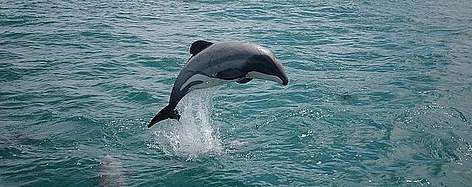DAY 3: Taking Action
Activity 1: Predator Free 2050 – A Call to Arms [4 points]
There is currently a huge drive to get rid of all predators from New Zealand. Predators are animals that, in some way, damage our natural environment. Many organisations are working hard to accomplish this goal.
Click on the links below to watch videos about three of the current projects operating to make New Zealand ‘Predator Free by 2050.’
Predator Free Video #1: Cacophony Project
Predator Free Video #2: Taranaki Mounga Project
Predator Free Video #3: Zero Invasive Predators (ZIP)
On your blog, tell us which one of the videos you liked the best and why.
I really liked the first video - Cacophony Project, because it catches predators, not the animals.
I really liked the first video - Cacophony Project, because it catches predators, not the animals.
Activity 2: Protecting the Most Vulnerable - Fact or Fiction? [4 points]
Here in New Zealand we have a native dolphin, the Māui Dolphin, that is on the verge of extinction (disappearing forever). As of this year, there are only 63 Māui dolphins left and people predict that they will be extinct by 2033. Environmentalists are working hard to save the dolphin because it is such a special and unique animal. To learn more about the Māui Dolphin, please follow this link. Once you have learned more about the dolphin, it is time for you to share your learning with us. 
On your blog, post three facts that you learned about the Māui Dolphin that are true. Then, using your imagination, create three more statements about Māui dolphins that are not true (i.e. false). Please don’t tell us which of your statements about Māui Dolphins are true and which are false. It will be the job of the students and staff who read your blog to figure it out.
- Māui dolphin can see with sound.
- Māui dolphins have the same fin shape as a common dolphin.
- Māui dolphins live up to 20 years.
- Māui dolphin communicates with clicks.
- Māui dolphins are found on the North and South Islands.
- Māui dolphins are endangered.
Activity 3: The Power of Ten [10 points]
Sir David Attenborough is a famous TV presenter from England who loves nature and the natural world. He has spent his career filming documentaries about the planet and working hard to protect it. In a recent interview, Sir David was asked to reflect on all that he had learned and to imagine that he had suddenly been given the power to save 10 animals and/or plants from extinction (disappearing forever).
3. Solenodon
Let’s imagine that you had the same power and that you could save 10 species (animals or plants) from extinction. Who would you save? If I had the choice I would probably save animals like the elephant, white tiger and rhinoceros because they are unique and have lived for centuries on earth. I would also like to save some of my favourite flowers including hydrangeas and calla lily flowers. What about you?
Left to right: White tiger, Hydrangeas, Calla Lily
On your blog, list 10 species (animals or plants) that you would protect from extinction. For each one, give a reason as to why you think it is important to protect.
- Tiger - There are only 3,890 tigers in the wild.
- Amur Leopard - Amur Leopards are critically endangered. There are more than 84 individuals.
- Cross River Gorilla - Cross River Gorilla is critically endangered. There are around 200 to 300 individuals.
- Javan Rhino - Javan Rhino is critically endangered. There is just only 58-68 Javan Rhinos left.
- Sumatran Rhino - Sumatran Rhinos are critically endangered. There just only 80 left in the wild.
- Sumatran Tiger - Sumatran Tiger is critically endangered. There is less than 400 Sumatran Tigers left.
- Vaquita - Vaquita is the world's most rare marine mammal. It's so close to extinction. There is just only 30 individuals.
- Sea Turtle - We need to save Sea Turtles because they are caught and used for meat, eggs, leather, shell and curios. There is just only 7 species of Sea Turtles left. We don't know how many Sea Turtles are left.
- Saola - Which is a critically endangered, the population of Saola is decreasing. The population of Saola is unknown.
- Asian Elephant - it is endangered but not critically endangered, there are fewer than 50,000 Asian Elephants left.